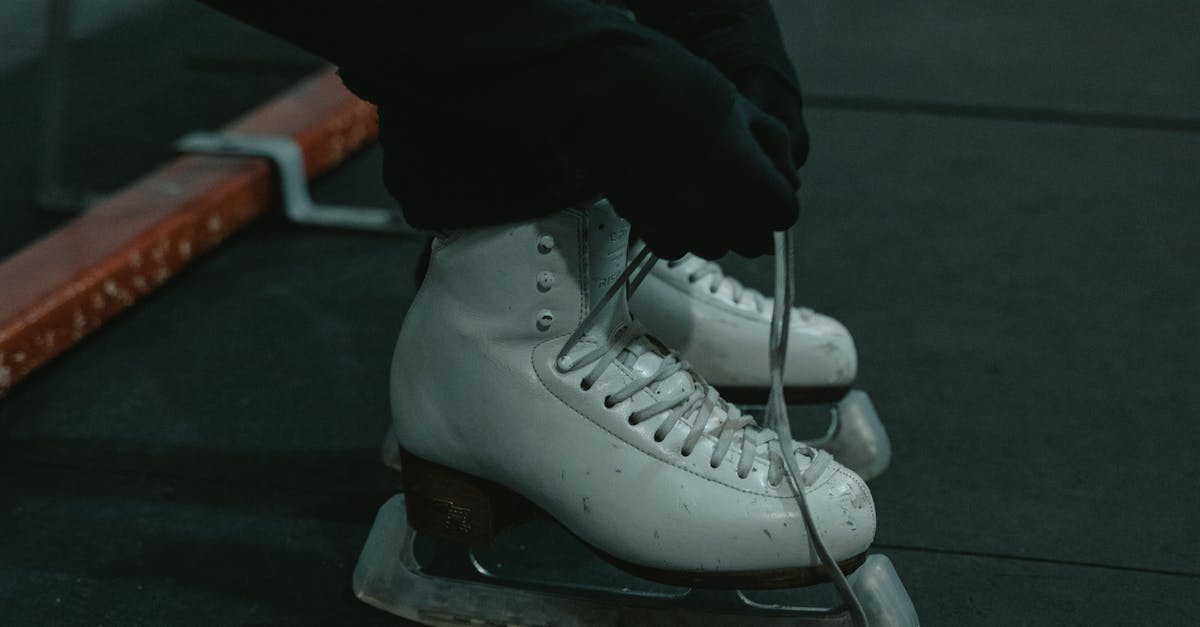
Boot Adjustment
Table Of Contents
Boot Adjustment
Finding the perfect pair of boots can be a challenge, especially when it comes to comfort and performance. An expert boot fit assessment is essential for anyone looking to optimize their footwear experience. This process goes beyond mere sizing; it delves into the nuances of foot shape, arch support, and personal preferences. With a tailored fit, your boots can significantly enhance your outdoor activities or daily wear, allowing you to focus on what truly matters.
An expert boot fit assessment not only addresses fitting issues but also helps in customizing the boot to match your unique foot characteristics. Whether you're a seasoned hiker, a casual walker, or someone who spends long hours on their feet, understanding the importance of proper boot adjustment can lead to a more enjoyable and pain-free experience. By investing time in fitting boots correctly, you set yourself up for success, ensuring every step you take is supported and comfortable.
Choosing the Best Boot for Your Needs
While it comes to finding the right footwear, making the right footwear is crucial for optimal performance and comfort. Every need requires particular features that may enhance your experience. For instance, if you are skiing, you will want shoes that provide superior support and durability, while lifestyle wear may prioritize aesthetic over technical features.
Fitting is another vital aspect to consider when picking your footwear. The well-fitting boot should embrace your foot without causing discomfort. It is important to remember that the anatomical structure of feet vary greatly, so fitting multiple options is recommended. In addition, look for features such as waterproofing that align with your unique preferences to ensure the footwear not only fits well but also performs effectively in various conditions.
Aspects to Think About When Picking Ski Boots
When picking boots, one must evaluate various factors that can influence performance. The suitable size is essential as it can determine your total experience on the slopes. Additionally, foot structure and volume are important considerations that can greatly impact how well the boots function.
A important aspect to think about is the stiffness of the boot. Specific levels of stiffness can improve performance and comfort when skiing. Also, the insulation material can impact warmth and comfort throughout the day. Ultimately, taking the features of the boot can also make a role in your total satisfaction.
How to Look After Your Boots
Effective care is important to ensure the lifespan of your footwear. Routine cleansing is important for eliminating dirt, salt, and moisture that can damage the material. Utilize a damp cloth to wipe down the exterior and a soft brush for any stubborn spots. Once cleaning, let your boots to dry out at room temperature, avoiding direct heat sources that can result in cracking or warping.
Applying conditioner on leather boots can also enhance their appearance and water resistance. Ensure to use products specifically designed for your type of boot material. Keep your boots in a cool, dry place when not in use to prevent mold and mildew growth. Reflect on using boot trees or stuff them with newspaper to help maintain their shape. Adhering to these simple practices will help keep your boots looking great and performing well for years to come.
Effective Techniques for Maintaining Your Boots
In order to prolong the life of ski boots, suitable care is essential. Begin by scrubbing the boots after each use. Utilize a soft brush to remove dirt and debris while ensuring you do not damage the material. After cleaning, allow the boots to air dry away from direct heat sources. That helps maintain the shape and integrity of the materials. Alongside this, applying a weather-resistant treatment can help maintain the boots protected from moisture and stains.
Frequent inspections of the boots are vital for identifying any signs of wear and tear. Check the soles for any damage or excessive wear, as well as the laces for fraying. Swapping worn-out components promptly can help avoid larger issues down the line. Placing your boots in a cool, dry place when not in use helps prevent mold and mildew. Using boot trees or stuffing them with newspaper can help maintain their shape and absorb excess moisture. These kinds of practices ensure your boots remain supportive and ready for your next adventure.
Advanced Technologies in Boot Fitting
Today, the art of boot fitting has greatly improved through advanced methods. 3D scanning is a game changer in achieving a perfect fit. This allows professionals to capture the exact shape of a client's foot, ensuring that each contour is considered. Furthermore, thermal liners have gained popularity as another innovative method that boosts comfort and performance.
An additional method that exhibits the developments in boot fitting is the use of tailored insoles. Through high-tech materials and engineering, custom insoles provide comfort that aligns with the unique structure of an individual's foot. The integration of cutting-edge solutions ensures that every skier or snowboarder can enjoy a secure fit, contributing to better performance and reduced fatigue. By embracing these advanced technologies, the future of boot fitting appears exciting.
The Influence of Technology on Ski Boot Fitting
Technology has changed the boot fitting in the last decade. Through the use of advanced scanning technologies, boot fitters can generate precise models of a person's feet. This allows for bespoke fittings that ensure comfort and performance on the slopes, in the end enhancing the overall skiing experience.
Moreover, technological innovations in materials have resulted in the development of ultra-lightweight and more flexible boot designs. These enhancements not only boost comfort but also enable skiers to have superior control and responsiveness. With these advanced solutions, boot fitting industry continues to evolve, making it easier for skiers to find the perfect fit.